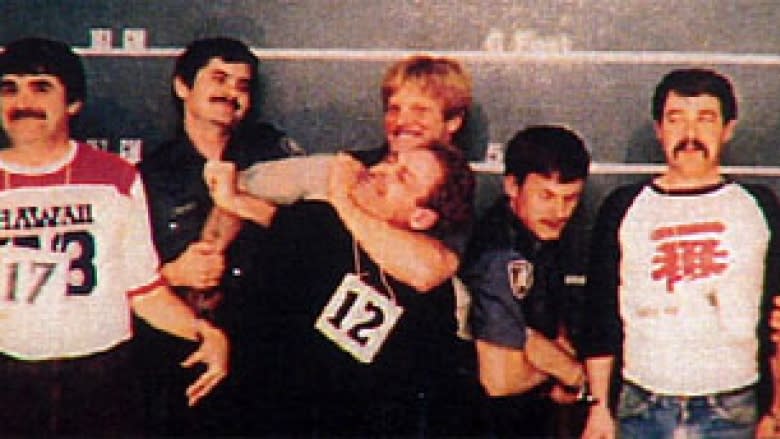Ivan Henry's lawsuit for wrongful sex-assault conviction begins

The Crown and police knew they didn't have enough evidence to convict Ivan Henry, but found a way to pin a series of sexual assaults on him regardless, Henry's lawyer argued Monday.
In his opening statement at Henry's landmark civil trial, John Laxton said his client wants compensation for wrongful conviction and 27 years of "hard time" he spent in prison before B.C.'s Court of Appeal acquitted him in 2010.
"The results for Mr. Henry and his family have been devastating," Laxton told the court. "His release from custody did not release him from the demons that haunted him in custody."
'Farcical' lineup picture
Henry is suing the City of Vancouver, the British Columbia Crown and the federal government for his wrongful conviction in 1983 of 10 sexual assaults involving eight victims.
As his client watched the proceedings from the packed public gallery, Laxton painted a picture of a flawed police investigation and a prosecution that hid evidence that could have exonerated his client.
He pointed to a "farcical" police lineup picture into which Henry was dragged kicking and screaming; an officer holds him in a headlock as others grin.
"There's no question anybody looking at that would know immediately who the police suspect was," Laxton said.
Even then, he said, not one of the victims identified Henry's face. Three said they recognized his voice, even though he was yelling and there was no evidence the perpetrator ever shouted.
Laxton said the weakness of the case was later identified in a letter from a Crown lawyer that was not disclosed to Henry before his trial.
She wrote: "It is disastrous. The accused is so obvious in the photos. It is pathetic. But that's the way it is."
Laxton said the Crown also failed to disclose blood testing from sperm that would have excluded Henry in one of the assaults. He said they also hid results of surveillance that could have helped his defence.
'Tunnel vision of the facts'
Laxton claimed police lacked identification, but finally managed to get it through a complainant with a strong emotional connection to the lead detective in the case.
In a letter only recently disclosed to Henry's lawyers, Laxton said, she told the officer "I didn't want to let you down. I didn't want to disappoint you, and I guess I didn't want to risk never seeing you again."
Laxton said she identified Henry through what the Court of Appeal called a "polluted" array of pictures in which the complainant was shown a photograph of Henry taken in front of a jail cell with the arm of a uniformed officer visible.
"Tunnel vision of the facts closed their eyes to the reality that was becoming more and more obvious," Laxton said. "Henry was the wrong man."
The rapes occurred in a series of Vancouver neighbourhoods from 1980 to 1982. The perpetrator broke into ground floor apartments and sexually assaulted women at knifepoint.
Henry maintained his innocence for decades, but it wasn't until another suspect was identified in similar rapes that continued while he was in jail that authorities started to believe him.
Laxton described the defence taken by the Crown and the city as "troubling." He said they deny the fact of wrongful conviction — in part because Henry represented himself at trial.
"It's an approach that suggests that his vulnerabilities make him the author of his own misfortune," he said.
Henry watched the proceedings with his daughter by his side. Now in his late 60s, he said he found the array of facts laid out in the opening statement, "overwhelming."
Laxton said the case is the first time that a wrongfully convicted accused has had to seek compensation for his ordeal through the courts: "It will be a precedent that never should have had to be necessary."

